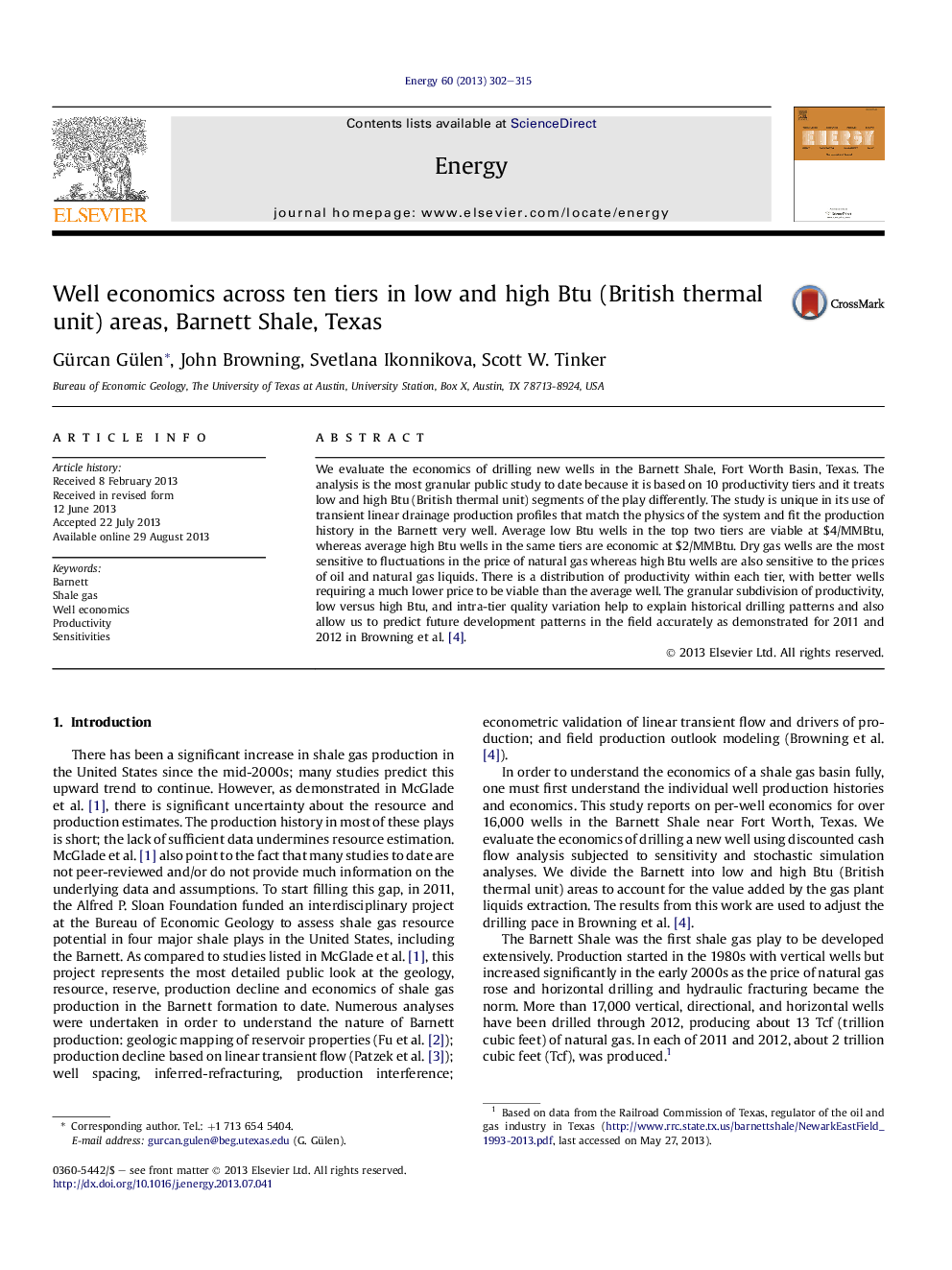| Article ID | Journal | Published Year | Pages | File Type |
|---|---|---|---|---|
| 1732630 | Energy | 2013 | 14 Pages |
We evaluate the economics of drilling new wells in the Barnett Shale, Fort Worth Basin, Texas. The analysis is the most granular public study to date because it is based on 10 productivity tiers and it treats low and high Btu (British thermal unit) segments of the play differently. The study is unique in its use of transient linear drainage production profiles that match the physics of the system and fit the production history in the Barnett very well. Average low Btu wells in the top two tiers are viable at $4/MMBtu, whereas average high Btu wells in the same tiers are economic at $2/MMBtu. Dry gas wells are the most sensitive to fluctuations in the price of natural gas whereas high Btu wells are also sensitive to the prices of oil and natural gas liquids. There is a distribution of productivity within each tier, with better wells requiring a much lower price to be viable than the average well. The granular subdivision of productivity, low versus high Btu, and intra-tier quality variation help to explain historical drilling patterns and also allow us to predict future development patterns in the field accurately as demonstrated for 2011 and 2012 in Browning et al. [4].
